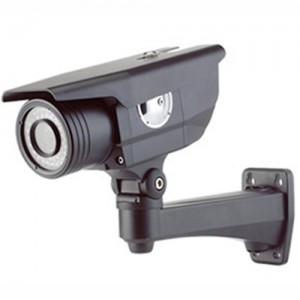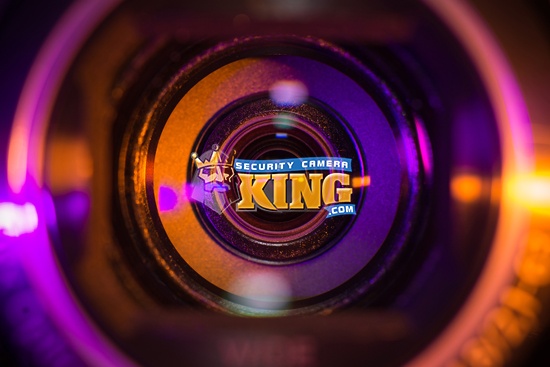 All about Night Vision Cameras
All about Night Vision Cameras
A night vision security camera is probably one of the best choices that you can make for your new security system. The vast majority of criminals are not going to stand right in front of any type of security system in the middle of the day, but night vision cameras will allow you to get a great look at the criminals when they are more than likely to attempt to strike and commit a crime. These cameras are more affordable than what you may think and now that there is the option of having wireless technology you will be able to install the system yourself, without the assistance of a professional. Even though night vision cameras work best on the inside of your home, when you take the proper measure you will be able to install the night vision camera on the outside of your home. You will be able to see whether or not anyone has tried to break into your home or business. When you have the night vision cameras installed, you are going to have the peace of mind you are looking for.
You should never leave the security of your home or business in the dark. Night vision security cameras can bring you the solution you are looking for to solve the problem. There are a lot of different models in night vision cameras, but the main thing to remember is that these security cameras are going to operate on one of the two key principles, either thermal imaging or image enhancement. The thermal imaging works through collecting wavelengths of heat from the various objects and then transmits them into a picture. Image enhancements work through amplifying minimal amounts of light to be able to make the image appear. You don’t have to make the decision in night vision security cameras any more difficult than it needs to be.
The whole decision process of your night vision security camera is going to depend largely on what you are planning to use the camera for. The LEDs are going to emit a light that will not be able to be seen by the human eye, but instead it reflects from an object that will then in turn be amplified by the camera. The higher the amount of LEDs that are sent out from the night vision cameras, the brighter the images are going to be and the greater the amount of distance that will be covered. Picture clarity is going to depend on the number of pixels, as well as the television lines that are available.
Some of the other options that need to be considered when choosing your night vision camera include: motion detectors, day and night operating capabilities, and fixed versus an adjustable lens. The day and night operation allows the camera to be able to switch from a limited operation during the day, which is typically in color, to a low-lighting condition for the evening operation, thus eliminating the need for two separate cameras. Motion detectors are going to reduce the amount of power that is being used by only turning the camera on whenever there is movement detected. Lens types need to be determined from whether the camera will remain fixed or of there is going to be a need for it to be moved or zoom in on an object in its line of sight.
Night Vision Cameras and How They Work
Whenever light strikes an object you will find that the atoms are going to react and emit a low amount of frequency that is an infrared wavelength, which is more similar to regular heat than it is to visible light. Night vision security cameras are very sensitive to the thermal-infrared emissions and it will amplify them so that they are converted to the measurement of an invisible wavelength that is an image that appears on your monitor. This particular type of night vision can be referred to as thermal imaging. Thermal imaging is an excellent way for detecting people or movement when you are near complete darkness. The majority of the cameras are going to have a more practical approach to night vision known as image enhancement.
This particular type of device is going to contain a lens that will be able to sense light at a higher frequency than the infrared cameras. It can sense light from anywhere for the most reflective infrared wavelengths all the way to the almost invisible red wavelengths. The light has photons that are going to be converted to electrons that are amplified through a component that is known as photocathode. Those same electrons are then converted once again into photons that are going to produce a strong image that will be highly visible on your camera’s screen.
What is the Purpose of Infrared Illumination?
When you choose to saturate the area with a reflective light it allows your night vision camera to be able to draw in the image with a more enhanced detail. It is the same concept as if you were to shine a spotlight into something that you need to see with your own eyes. This whole process will make the object more visible as the area is lit up with the invisible light to greatly improve your chance of night vision.
How Do I Select a Night Vision Camera?
Night vision security cameras are going to have a Lux rating applied to them. This Lux rating actually refers to the minimum amount of illumination for which the camera is going to be able to pick up and detect an image. The camera will have the best amount of performance for nighttime and low-lighting conditions, if you can get your rating as close to 0 as possible. The night vision security cameras are going to have the assistance of infrared LEDs, which also have a Lux rating of the bare minimum. This means that the security cameras are going to be able to see when there is absolutely no light and complete darkness. When you have a color day and night camera you will automatically be able to switch to the black and white shades in the evening for the best possible performance when you are faced in a low lighting situation and then it will switch back to color as soon as the lighting levels are acceptable enough for it to do so.
camera will have the best amount of performance for nighttime and low-lighting conditions, if you can get your rating as close to 0 as possible. The night vision security cameras are going to have the assistance of infrared LEDs, which also have a Lux rating of the bare minimum. This means that the security cameras are going to be able to see when there is absolutely no light and complete darkness. When you have a color day and night camera you will automatically be able to switch to the black and white shades in the evening for the best possible performance when you are faced in a low lighting situation and then it will switch back to color as soon as the lighting levels are acceptable enough for it to do so.
Night vision technology has been around for a long time now and it continues to advance slowly as the year’s progress. It was around 50 years ago that the first night vision cameras consisted of nothing other than a simple infrared spotlight and a receiver that was photosensitive in order to be able to pick up the reflected beams of light. This whole process was not as effective as they thought it would be, so they ended up enhancing the reception on the passive IR emissions. The next generation of cameras saw the incorporation of a micro channel plate, which was then multiplied through the efficiency of the conversion of electron photon, thus another step in the advancement of night vision technology. Shortly after another generation was introduced to be used by the U.S. Military, which incorporated the use of improved resolution and sensitivity. Not to mention the exceptionally long life for the cameras. The last class of cameras are actually quite expensive, but they tend to be the best and the most powerful cameras to date.
Range of Night Vision Cameras
The night vision security cameras are only limited to the amount of light that it can detect through the IR light. If the camera is focused on thermal imaging, it is going to be able to pick up any movement or heat at a much farther distance than your typical static objects. When the conditions are right the night vision cameras are going to be able to view anywhere from 30 to 300 meters away. The different weather conditions are going to be able to affect the range the camera can view as well. You will be able to extend the range of your camera through saturating the area completely with some extra infrared illumination.
Night Vision Power Source
Most of the night vision security cameras are going to come equipped with an adapter that can be plugged directly into a wall socket. There are some of the models that offer the incorporation of a battery to provide an even greater mobility for your camera. You are going to need to feed the video and audio cables from your camera into your choice of monitoring device. You could always choose to have on-site installation performed, if you are unsure of how to hook up your camera correctly. The wireless models allow the transmitting of a frequency toward a receiving unit, which will then feed those cables into your choice of monitoring system. This particular type of camera is typically going to require some form of external power.

